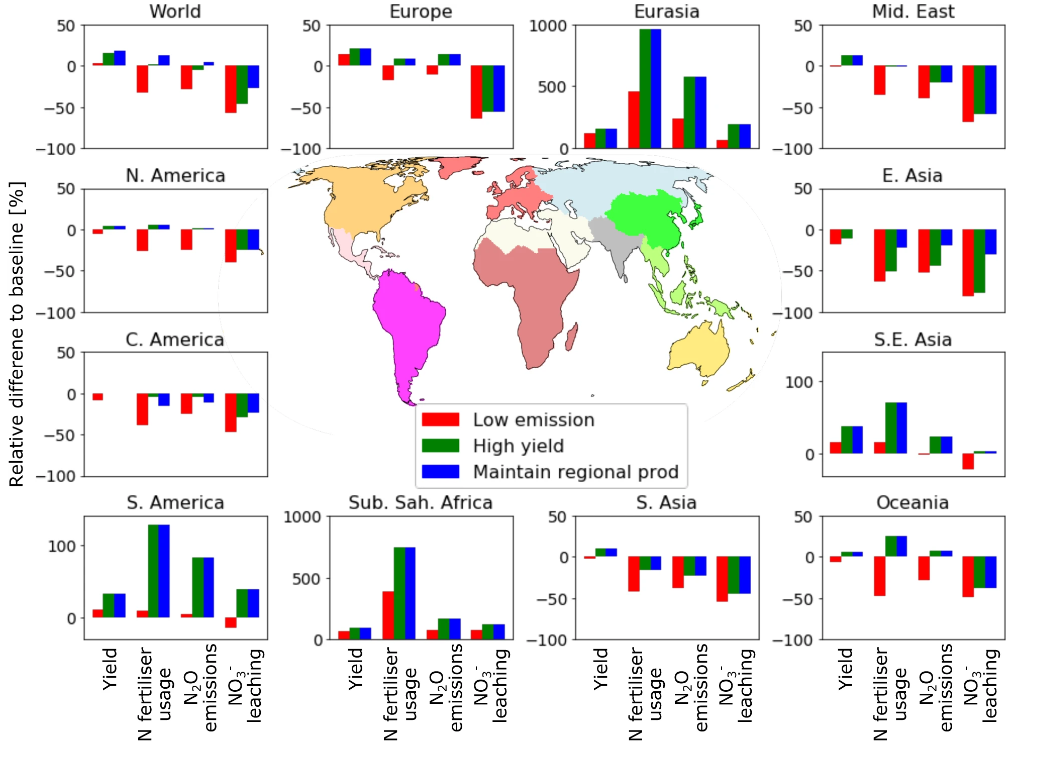A redistribution of nitrogen fertilizer across global croplands can help achieve food security within environmental boundaries
September 28, 2023 | Communications Earth & Environment |
Introduction: Producing enough food for a growing global population while reducing environmental pollution and climate impact is a major challenge. From simulating global cereal cropping systems, the researchers from Karlsruhe Institute of Technology (KIT) in Germany proposed a strategy of optimizing fertilizer application across global croplands of major cereal crops such as maize, wheat, and rice.
Key findings: The current cereal production levels could be maintained with a 32% reduction in total global fertilizer use. Alternatively, cereal production could be increased by 15% with current nitrogen fertilizer levels. This redistribution approach not only ensures food production but also leads to substantial reductions in nitrogen pollution. Moreover, a more equitable distribution of nitrogen fertilizer across global croplands could reduce pollution on in heavily fertilized regions such as East Asia, and allow areas like Sub-Saharan Africa to move towards self-sufficiency.
Read more: A redistribution of nitrogen fertiliser across global croplands can help achieve food security within environmental boundaries

Fig. | Regional changes in cereal yield, N-fertiliser usage, N2O emissions and NO3− leaching. Changes are shown relative to the baseline scenario.
Viewed Articles
September 28, 2023 | Communications Earth & Environment |Â Â Introduction: Producing enough food for a growing global population while reducing environmental pollution and climate impact is a major chal
Read More
April 20, 2023 | Journal of Cleaner Production | Source | Â Introduction: Fresh food cold supply chains (CSCs) in developing countries face major sustainability issues, including food waste, high energ
February 28, 2024 | Agriculture, Ecosystems & Environment | Source |  Introduction: Despite existing mitigation efforts, integrated approaches addressing system-wide emissions—including soil organic c
January 15, 2022 | Atmosphere | Source |Â Introduction: Livestock both drives and suffers from climate change, contributing 14.5% of global GHG emissions while facing growing climate-induced stress. Re
April, 2023 | Environmental Challenges | Source |  Introduction: Upstream greenhouse gas (GHG) emissions (i.e. scope 3)—accounting for 70–90% of the dairy industry’s total emissions—pose a persistent
November 4, 2024 | Nature Climate Change | Source | Â Introduction: The research, led by scientists from South China Agricultural University (China) with a global team from Egypt, Russia, and Germany,





